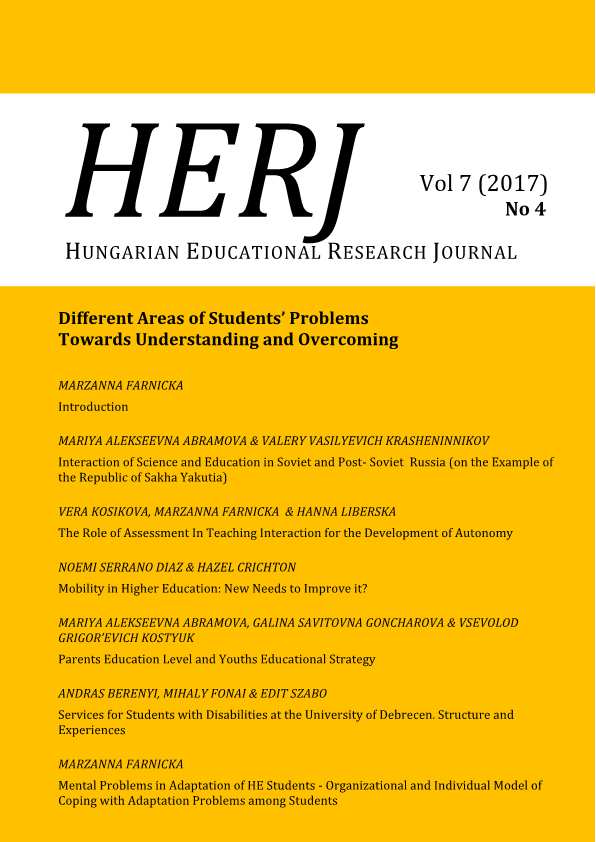Issues of Roma Education in Light of Interrelations of School Theories between 1978 and 1998
Issues of Roma Education in Light of Interrelations of School Theories between 1978 and 1998
Author(s): Péter BogdánSubject(s): Education, Higher Education , State/Government and Education, Sociology of Education
Published by: Hungarian Educational Research Association (HERA)
Keywords: school theory; school typology; theory of education; education of Roma children
Summary/Abstract: This study places emphasis on school theories, particularly on school models developed over the centuries. In consequence of that the starting points for this writing were the so called school theories and school typologies, respectively that such publications were published by László Gáspár, Ottó Mihály and László Zrinszky, I had to start from their texts during the writing of my paper. According to the methodology used here it will be analyzed, based on the school theory (school typology) framework mentioned above, that between 1978 and 1998, in Hungary, what kind of education theory models were associated with different school types and how the models of education theory were represented in the different school types or in the “other” category (if the given educational phenomenon could not be categorized into a single school type). According to the results of the analysis: There were educational schools, work-oriented schools, traditional schools, progressive schools, revolutionary schools and market schools in Hungary between 1978 and 1998. The Kádár-regime supported the “socialist idea of man”, and thus it neglected to emphasize Roma children’s ethnicity. Still, besides the assimilating traditional school, the segregating educational school model based on black pedagogy, which took ethnicity into consideration practically, also prevailed. Moreover, the concept of integrative education, which is characteristic of market schools, also appeared in the public mind. This means that those who thought in strategies and theories of Roma education did not always follow (either in their writings or in practice) the mainstream tendencies set by the administration, but deliberately turned against them. After the regime change, the integrative education model flourished while segregation still remained, suggesting that although the current state education policy accepts the concept of no segregation, reality fails to meet expectations under the democratic system just as it did in the socialist era.
Journal: HERJ Hungarian Educational Research Journal
- Issue Year: 7/2017
- Issue No: 4
- Page Range: 103-116
- Page Count: 14
- Language: English

